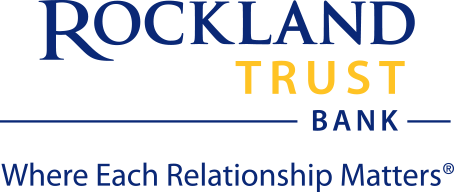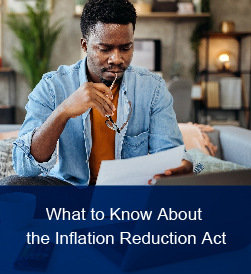Written by Steve Andrews
 The markets in August were not for the faint of heart. Well into the second half of the month, U.S. stocks continued to rebound from their mid-June lows and put together their best winning streak since last November. The rise was helped by solid economic data and better-than-expected corporate earnings reports from Q2. Helping, too, were hopes that the Fed might not be as aggressive in tightening U.S. monetary policy as it seeks to temper the worst inflationary outbreak since the late 1970’s. These hopes were supported by the minutes from the July Federal Open Market Committee (FOMC) meeting, where the Fed again lifted Fed Funds, etc. by three quarters of a point (0.75%). Several FOMC members were quoted as being concerned that the Fed might once again overreach, as it had in the past, and tip the economy into a recession.
The markets in August were not for the faint of heart. Well into the second half of the month, U.S. stocks continued to rebound from their mid-June lows and put together their best winning streak since last November. The rise was helped by solid economic data and better-than-expected corporate earnings reports from Q2. Helping, too, were hopes that the Fed might not be as aggressive in tightening U.S. monetary policy as it seeks to temper the worst inflationary outbreak since the late 1970’s. These hopes were supported by the minutes from the July Federal Open Market Committee (FOMC) meeting, where the Fed again lifted Fed Funds, etc. by three quarters of a point (0.75%). Several FOMC members were quoted as being concerned that the Fed might once again overreach, as it had in the past, and tip the economy into a recession.
These hopes were reflected in the futures market which showed Fed Funds rising from around 2.50% today, to near 4.00% early next year. Soon thereafter, the futures market expected short rates to gradually recede as we reached the mid-point of 2023.
The Fed
But, as if determined to clear up any misunderstanding, Fed Chair Jerome Powell spoke at the Fed’s annual economic symposium at Jackson Hole, WY in late August and dashed those expectations, promising that the Fed would continue to press forward with tighter monetary policy until it “gets the job done” in its fight to bring inflation down closer to its 2% target. Almost immediately, the futures market adjusted. There would be no rate cuts built into rate futures next year, and interest rates across the curve rose in unison, bringing the yield on the 10-year Treasury above 3.40% and lifting the 2-year Treasury yield to its highest level since 2007. Stocks quickly decreased as well. The S&P 500 was down 4.2% in August, bringing its 2022 return to -17%, while the Dow Jones Industrial Average lost 4.06%, pushing its 2022 loss to -13.3%.
Investors took Powell’s Jackson Hole comments as a bit of a shock but, for the record, he has delivered the same message a number of times this year – whether reporting on the economy in front of Congress, or at press conferences following prior FOMC meetings. This means, for many, that tighter monetary policy means raising interest rates, but the Fed has other means at their disposal to restrict money supply.
For example, they can reduce liquidity in the money markets and nudge rates higher by selling securities. This Fall, they begin in earnest to reduce their massive portfolio of U.S. Treasury bonds and mortgage-backed securities which ballooned as they bought these securities to provide liquidity to the money markets during the pandemic. Now, as they ramp up sales to the tune of $60 billion each month (i.e., quantitative tightening, or QT), they will add to tightening pressures. The Fed themselves highlighted the anticipated effects of bond purchases and sales when, back in early 2020 as they announced $500B in quantitative easing to deal with the effects of the shutdowns, they projected that the bond purchases equated to at least a 0.50% cut in the Fed Funds rate.
The Rise of the Dollar
Another indicator of “tighter policy” comes from the sharp rise in the value of the U.S. Dollar (USD). A strong Dollar, coupled with weakening commodity prices (oil, gold, copper, etc.), is evidence of a tight Fed monetary policy. Lastly, the sharp slowdown in the growth of the U.S. money supply (M2 growth – which has barely moved all year), is helping to ease inflationary pressures which seem to have topped out in May.
All of these, combined, suggest that U.S. monetary policy is already “tight,” and the Fed may not have to overextend itself to the point of severely dampening employment or economic growth.
Economic Expansion
Despite the inflation concerns and what damage it might force the Fed to impose on economic growth, most of the economy is expanding. Employment has grown by over 5.4 million jobs over the past 12 months and, while the unemployment rate edged up to 3.7% in August from 50-year lows in June and July, the rise was brought about by more workers returning to the U.S. workforce.
In addition, the growth in the U.S. manufacturing and services sectors rebounded in August, led by new orders and production, while the prices-paid (inflation) subset in both sectors fell for the fourth straight month and is down to 71.5 from its 84.6 peak last April. Consumer spending is holding steady as strong employment has lifted private sector wages up 11% from year-ago levels.
While the food & beverage and travel & entertainment industries are getting back in gear after struggling most of 2021, U.S. housing has suffered the most in 2022. Stiff headwinds from higher prices (which boost the needed down payment for a home), and higher mortgage rates, have lifted the average monthly mortgage payment by 40% since the start of the year. Put another way, the same monthly mortgage payment that could purchase a home for $550,000 back on January 1 can now only afford a $405,000 home. Add these hurdles to those already in place from low supply this year (and constant whispers of recession), and home sales have slowed dramatically.
SUSTAINING YOUR MANUFACTURING BUSINESS IN 2022
Home Sales
Existing home sales have dropped for six straight months and (except for a few months at the start of COVID) are the slowest since 2015, while new home sales really are the slowest since early 2016. Through May of this year, private residential construction had risen for 24 months straight but has been on the decline since then. Housing starts peaked last April at a 1.8 million annual rate but slipped to 1.45 million in July – a 20% dip. If there’s good news in all this, it’s that the rise in home prices has moderated sharply. We went almost 2 years (from August 2020 to May 2022) where prices rose at least 1% every single month and home prices had climbed nearly 9% in 2022 through May. However, in June, the increase was just 0.3%.
There are concerns that a housing crash, similar to 2008, might follow at some point, but the housing market today is nothing like that of the early 2000’s. First off, we are not overbuilt. Construction fell sharply from 2009 to 2014 as financial institutions worked through the mountain of foreclosures. It is estimated that the U.S. needs 1.5 million new homes each year just to keep up with demographics and replacement of obsolete homes. But, from 2008 through most of 2019, we never reached that rate of construction. In December 2019 and January 2020, we rose above 1.5 million starts for the first time in a decade, then the pandemic hit, and we lost another year. The cumulative underbuilding has caused a housing shortage that has driven prices to record levels.
In addition, lending standards tightened after the housing crash. Gone are the 0% down and no-doc, no-verification rubber stamp mortgages that allowed “owners” to walk away from homes they could no longer afford and in which they had no equity. In August, the Fed reported that the market leverage was just 42% (i.e., the ratio of debt to equity in the overall housing market) - the lowest on record. This is just on mortgaged homes and does not include homes owned free-and-clear. So, if we do hit a rough patch, most U.S. homeowners have the equity to ride it out.
In the meantime, demand for housing remains strong as Millennials form new households and choose to either buy or rent while the U.S. housing market wrestles with indigestion. Home prices have surged ahead of COVID-moratorium-restricted rents and even as surging rents feed inflation, it will take some time for rents to catch up to home price levels. Home prices are likely to flatline or even ease a bit from current record levels until that happens.
Locally, activity is expected to slow somewhat in the higher priced segment but, for homes at median price levels or below, things are expected to remain heated.
Inflation Data
The August inflation data showed overall Consumer Prices (CPI) were up 0.1% from July, while Producer Prices (PPI) fell 0.1%. The CPI rise was disheartening for many investors, but it does not take away from the view that inflation has peaked.
Yes, some areas, like rents, remain sticky, but they are a lagging inflation indicator since they tend to rise about 12 months after prices in general rise, so they will likely start to top out sometime next Spring since overall inflation peaked in May. Keep in mind, too, that while year-over-year inflation remains high, over the past 6 months, the annual rate has been on a steady decline. We used the 6-month inflation rate to point out the surge in prices last year at the same time when the Fed was assuring us that inflation was transitory because it’s a great way to see inflation changes on the margin. This, plus the moderation in money growth (M2), suggests that the Fed may not have to crush the economy with overly tight monetary policy as long as (M2) continues to flatline. M2 growth has risen just 1.6% through August, compared to its 6.1% historical growth rate and its 40% spike following the shutdowns.
Opinions expressed are those of the author and not representative of Rockland Trust Company. This is not intended as professional or any other financial advice. Please consult a professional advisor for your specific situation.


.png)




